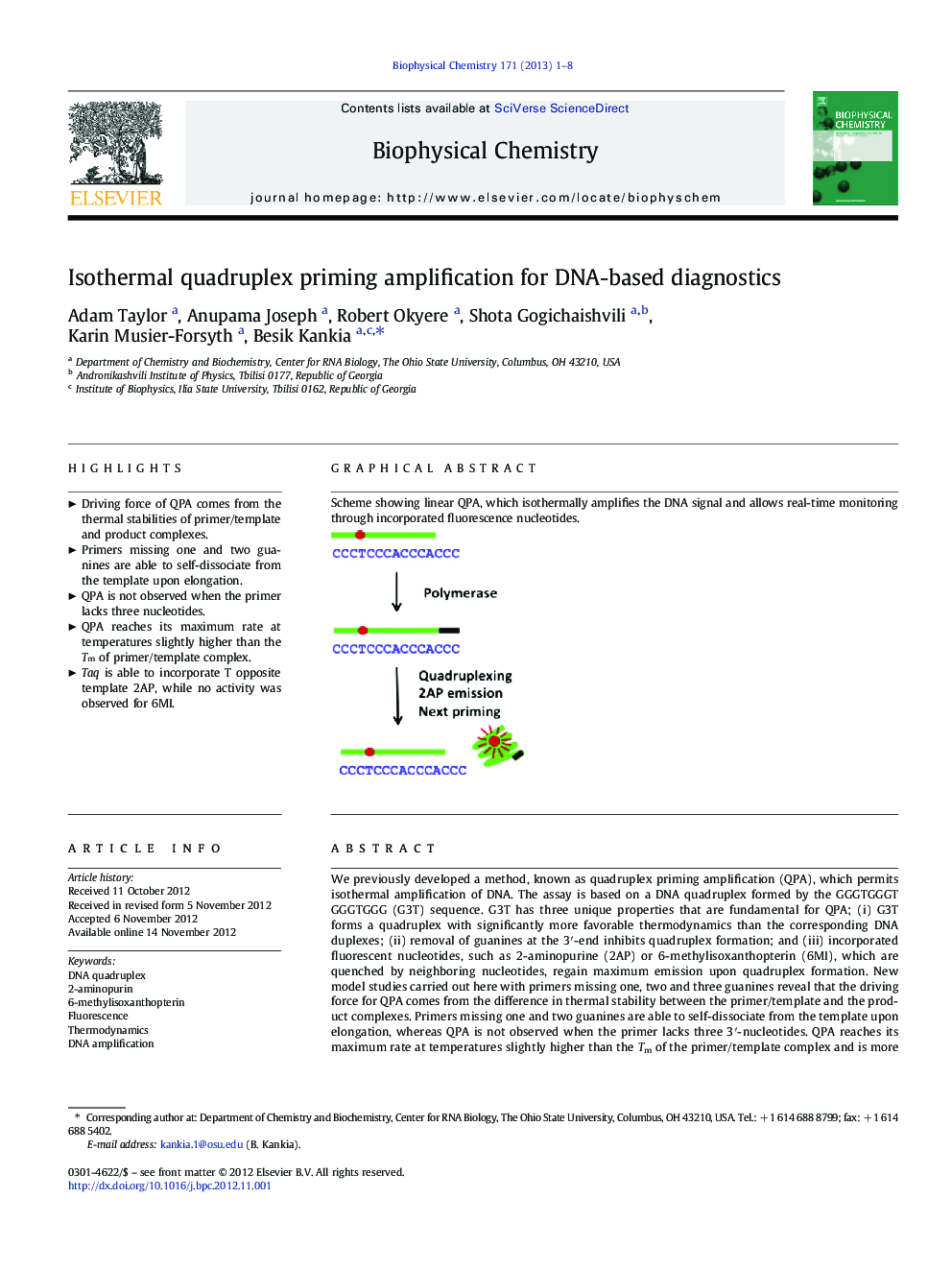| Article ID | Journal | Published Year | Pages | File Type |
|---|---|---|---|---|
| 5371184 | Biophysical Chemistry | 2013 | 8 Pages |
We previously developed a method, known as quadruplex priming amplification (QPA), which permits isothermal amplification of DNA. The assay is based on a DNA quadruplex formed by the GGGTGGGTGGGTGGG (G3T) sequence. G3T has three unique properties that are fundamental for QPA; (i) G3T forms a quadruplex with significantly more favorable thermodynamics than the corresponding DNA duplexes; (ii) removal of guanines at the 3â²-end inhibits quadruplex formation; and (iii) incorporated fluorescent nucleotides, such as 2-aminopurine (2AP) or 6-methylisoxanthopterin (6MI), which are quenched by neighboring nucleotides, regain maximum emission upon quadruplex formation. New model studies carried out here with primers missing one, two and three guanines reveal that the driving force for QPA comes from the difference in thermal stability between the primer/template and the product complexes. Primers missing one and two guanines are able to self-dissociate from the template upon elongation, whereas QPA is not observed when the primer lacks three 3â²-nucleotides. QPA reaches its maximum rate at temperatures slightly higher than the Tm of the primer/template complex and is more efficient in the presence of only dGTP. QPA-based assays also revealed that Taq is able to incorporate thymidines opposite template 2AP, while no significant incorporation was observed opposite template 6MI.
Graphical abstractScheme showing linear QPA, which isothermally amplifies the DNA signal and allows real-time monitoring through incorporated fluorescence nucleotides.Download full-size imageHighlights⺠Driving force of QPA comes from the thermal stabilities of primer/template and product complexes. ⺠Primers missing one and two guanines are able to self-dissociate from the template upon elongation. ⺠QPA is not observed when the primer lacks three nucleotides. ⺠QPA reaches its maximum rate at temperatures slightly higher than the Tm of primer/template complex. ⺠Taq is able to incorporate T opposite template 2AP, while no activity was observed for 6MI.
